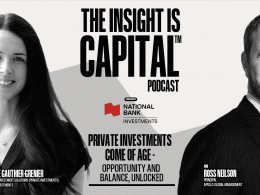The artificial nature of the U.S. economic recovery from the recession lows has always been obvious. In recent months, judging from media coverage, it is now mainstream. While there are a few lingering signs that support some modest optimism, it is getting difficult to find much to cheer about. In our letter Vol. 2.10, The Artificial Economic Recovery, dated July 23, 2010 we pointed out that the U.S. growth trajectory was converging on 1% p.a. With revisions to second quarter GDP that seems to be fact now. A double-dip U.S. recession is still not a done deal but forces are all on the side of economic weakness and deflation, and a double-dip recession next year carries a significant possibility.(note 1)
Charts 1-3 show how the weak recovery in employment and production prospects and the stability in housing have all gone into reverse in spite of zero interest rates. This is highly unusual, to say the least, after only five quarters of economic recovery. The message is clear: the policy stimulus provided only a short-term boost.

![]()
It is clear that there is one global market place for goods, services and money. And the world has become, once again, structurally very unbalanced and hence, fragile, as pointed out in our Letter dated August 2, 2010, Volume 2.11, Roller Coaster Economics: Prepare for the Next Downturn, and discussed at length in The Great Reflation.(note 2)
For many years prior to 2008, there was a precarious disequilibrium requiring a delicate balancing act to keep things afloat. The crash demolished this artificial world and created another one via the greatest peacetime global reflation in history. In the vernacular, we describe this as trying to pump air back into the burst balloon.
Many would argue that the structural disequilibrium, directly and indirectly, was a principle cause of the crash. We are now heading back in that same direction—growing surpluses in China, Germany and Japan (Charts 4-6) and the counterpart, growing deficits in the U.S. and other weak debtor and deficit nations. This is a recipe for disaster because the deficit countries do not have the internal and external balance sheets to absorb the excess savings in the rest of the world. Rather than leveraging up their balance sheets, as they once did to consume, they are deleveraging under the pressure of markets to get liquid. When everyone tries to get liquid, either by saving more and spending less, or by trying to get others to buy their goods (in order to get their liquidity), the result inevitably is that liquidity shrinks in the key areas where it is most needed.

![]()
In the U.S., deleveraging in the household sector (Chart 7) has barely begun in spite of a surge in the savings rate, yet the U.S. trade deficit has widened dramatically (Chart 8). The counterpart is an explosive growth in exports of surplus countries like China, Germany and Japan. Chart 9 shows China’s surging trade balance.

![]()
The most egregious offender is mercantilist China Inc., with its enormously undervalued exchange rate, loan subsidies to exporters and a variety of other import restricting / export subsidizing policies. Its dramatic foreign exchange reserve growth in recent years reflects these policies. The resulting addition to Chinese liquidity feeds real estate bubbles (but not yet the stock market in this cycle). China does try to sterilize the monetary effects of reserve accumulation but it is not easy to do on a sustainable basis.
Effectively, the surplus countries are stealing growth from the deficit countries and not allowing them to adjust to external and internal disequilibrium. In the U.S., this can be seen most clearly by the simultaneous rise in the savings rate, the trade deficit and the deterioration in labor market data. When the natural forces of the adjustment process to economic disequilibrium are blocked, political tension must necessarily increase. In an election year, you can expect vulnerable politicians to act.
The options in this situation for a country like the U.S. are limited and not very good. Apart from further pushing on the monetary string (alias quantitative easing, formerly known as money printing), there is the possibility of more fiscal stimulus. With the U.S. government debt:GDP ratio already heading toward 100 by the end of the decade, this is a dangerous option and unlikely to buy much growth, nor for very long. However, politicians in the U.S. have never been known to worry too much about the longer run.
The third option is for the U.S. to opt for non-market solutions—tit-for-tat mercantilism—to boost domestic demand and employment at the expense of foreigners. Trade protection can be employed via competitive devaluation, tariffs, non-tariff trade restrictions, etc. It was last tried in the 1930s when surplus countries didn’t allow deficit countries to adjust. It would be a far more dangerous option now because the U.S. is a large foreign debtor. The U.S. has net liabilities of over $3.5 trillion, most of which are held in short-term instruments by central banks who could try to dump them in retaliation. The international monetary system is seriously flawed as it was in the 1930s, although there is the important difference that domestic money supplies are not rigidly linked to central bank holdings of gold or foreign exchange assets. Nonetheless, great instability with the major reserve asset of the world—dollars—would be catastrophic.
The options for other debtor countries are far more limited than for the U.S. Deficit countries in the euro area are currently being forced into fiscal austerity. More government spending and tax cuts are not going to happen. Nor do these countries have a monetary/competitive devaluation weapon in their tool box. By default, that leaves deflation, declining incomes and high unemployment (20% in Spain with Greece heading there) as the logical outcome. When social tensions reach the breaking point, trade protection will be seen as an alternative. In more extreme circumstances, some countries might depart from the euro, create their own currency and massively devalue. The result would be high inflation and chaos.
Apart from the U.S. and countries in the euro area, there are a variety of others with finances and economies in various states of disarray. The U.K., one of the larger ones, has gambled on major fiscal deflation. Even with major cutbacks, some forecasters such as Moody’s see U.K. debt spiraling up to 90% of GDP in three years. Japan, after 20 years of stagnation, has a government debt:GDP ratio over 200%. How Japan has managed to avoid a sovereign debt crisis for so long is a mystery, only partly explained by its formerly high personal savings rate. This has been falling in recent years, although a surge in corporate savings has kept total savings at the national level very high. With dismal growth prospects and rapidly deteriorating demographics, the overvalued yen is an accident waiting to happen (Chart 10). Most of Eastern Europe is also in dire straits, propped up with IMF credits. The few bright spots tend to be commodity producers such as Canada, Australia, Norway and Russia. Nevertheless, they will have trouble hiding if the world goes protectionist, anti-market and growth suffers.

![]()
These prospects should not be seen as a forecast yet. But the growing tensions from the deteriorating world economy, the need for sustained, large public and private deleveraging and the imperative of resolving global disequilibrium must be credibly addressed without delay. Time is of the essence. The global slowdown is accelerating and the U.S. faces a key election in 10 weeks. Failure to deal with these issues will inevitably push the U.S. and other debtor countries into taking action against the surplus countries to steal back growth. Everyone knows that would be a disaster, but it doesn’t mean it won’t happen. When options run out, you do what you have to, and that includes politicians facing voters who are looking for quick and easy solutions.
The key for investors is to understand that adjustments will happen. The process of trying to get a positive resolution will be messy, fraught with belligerent threats on all sides and, as always, it will be a nail biting, bluffmanship, go to the matt set of negotiations. Failure is not an insignificant probability.
Investment Conclusions
The uncertainty described above necessarily creates a very nervous environment for investors. Money does not like such uncertainty. Investors, more than ever, will have to grapple with these issues, having no clear idea how it will play out.
In the case of the U.S., politicians are returning from summer holidays to face a surly electorate. They must deal with deteriorating employment, production and housing conditions and a wobbly stock market. Policy change is inevitable within the constraints of a Republican/Democrat partisanship.
Federal Reserve resumption of quantitative easing, (i.e., buying bonds and mortgages) to inflate its balance sheet further is inevitable (Chart11). As the Fed’s balance sheet increases, banks will get more reserves, but continuing financial constipation means not much money growth will come out the other end. However, the action could boost financial markets and confidence for awhile. Voters might also feel better temporarily.

![]()
Further fiscal stimulus initiatives by the Administration will be exploited by Republicans on deficit bashing grounds. Therefore, Democrats will have to be creative to seduce enough Republicans to get the votes they need. Small business subsidies and housing would seem to be the easiest targets to get quick and popular action. Protectionist measures are probably inevitable, but in the short term, there will be a lot more talk than action.
Debt forgiveness on under-water mortgages has been mooted. Another moratorium on mortgage foreclosures is possible. There are lots of things that could get congressional support and have a quick impact (i.e., November use-by date) but, like previous measures, would only buy a little time. After all, 14% of mortgages are in foreclosure or delinquent. The estimate is that there will be one million foreclosed homes this year. Without some support, the brief stabilization of housing prices will end.
As our readers well know, we have emphasized the critical importance of capital preservation in this volatile, highly uncertain world. Within that conservative context, we have been relatively bullish on risk assets. We think the time has come to add another layer of caution to portfolios. The S&P 500 may well remain in an extended trading range but we may be much closer to the upper boundary than the lower. Seasonally, we are heading into a period when markets tend to be weak, and some important declines have occurred.
At this point, an extended bear market is unlikely, though possible. Corporate liquidity and profits have been, and still are, a good source of strength. But that is yesterday’s news. Analysts always lag behind when profits are peaking and that could well be the case now with the rapid slowing of the economy. However, the market is not expensive on a long-term basis.
The explosive rally in Treasury bonds has created an interesting situation in several ways. The 10-year yield is down about 100 basis points to 2¾% and the 10-year TIPS (real, inflation adjusted) yield has fallen from 1.7% to 1% over the last few months (Chart 12). It is at a record low and compares with the 2.1% dividend yield in the S&P. While most people compare nominal bond yields with dividend yields, the conceptually correct comparison is with real bond yields because dividend yields are “inflation adjusted” over time. The comparison shows that, if real bond yields remain low, stocks are cheap on this basis. The observant reader will note, however, that the last time real rates were this low was in early 2008, just before the stock market tanked. But that coincided with a move to over 3% in TIPS yields. A repeat anytime soon is unlikely.

![]()
It should also be remembered that low and falling real interest rates are bullish for gold. The recent decline in the real rate of interest has certainly supported gold prices. But it is useful to note that gold has essentially gone sideways in recent months (Chart 13) in spite of this tailwind of falling rates and the publicity surrounding huge purchases of gold by several very high profile hedge funds and massive purchases by retail investors.
Clearly, a sharp rise in real interest rates would be a major negative for both asset classes. At some point, real interest rates will rise, either because deflation sets in(note 3) or because the Treasury will have trouble selling its bonds as fears heighten over rising debt levels. It is unlikely to happen for some time.
Putting all this together, it is clear that there are cross-currents that will continue to affect the equity market and we prefer to shift toward more caution. Uncertainty will continue to grow and plenty can go wrong on short notice. On the other hand, it is hard to see where the positives might come from, other than another politically motivated reckless reflation effort from the U.S. authorities. We use the term reckless in a long-term sense. The U.S. simply does not have good options. Therefore, it will use the tools it has, trading off short-term benefits for long-term risks. There is nothing new in that!
Gold remains an enigma. It is still in a bull market, but one that seems to be losing momentum. It is a highly popular, well-advertised asset and has become very expensive relative to almost all other assets. It is, however, a demonstrated hedge against financial meltdown and, as such, deserves an insurance role of 5-10% in portfolios. But it is very expensive insurance; it will be volatile and could be a very poor performer if instability fears abate.
Miscellaneous Thoughts:
- The sharp move up in bond prices in recent months in reaction to the well-publicized economic slowdown makes bonds vulnerable on a short-term basis. However, long-term investors should continue to hold positions because bonds are doing what they are supposed to—provide safe income and a hedge against deflation. As a result they are a very good portfolio diversifier in this environment. Five and ten-year TIPS are poor value at near zero and 1% yields respectively. Twenty-year TIPS are much better at 1.7% yield but they are at the low end of their range and hence vulnerable.
- Credit spreads have narrowed and do not provide much value unless skillfully chosen. Junk bonds will experience increased risk as the economy deteriorates.
- The U.S. dollar should continue to weaken as further Fed balance sheet expansion occurs.
- Commodities (including oil) have more downside than upside potential as the economy slows further. However, the China slowdown is now a fact (Chart 14). Price inflation has eased sharply (Chart 15), the housing bubble has been pricked and exports are surging. Look for China to reverse monetary tightening, the stock market to increase and demand for commodities to start rising again.

- The controversial Australian mining tax is worth paying attention to by global investors who favor the resource sector as a long-term bullish play on world competition for these assets. While the ruling party in Australia lost seats in the recent election, the tax is not dead and has many supporters. In a world of desperate governments hungry for tax revenues, fat profits of resource companies are a tempting target. The old argument that such profits are a windfall on a depleting asset would play well to a large part of any electorate.
- Canada went through predatory government action against resource companies in the 1970s and again in Alberta a few years ago with an ill-fated increased royalty tax on energy. A left-leaning government in the future may well be tempted again.
- While Canada has deservedly had a good ride in recent years particularly through the global recession, due to strong Federal Government finances and a strong balance sheet, all is not quite as rosy as meets the eye. Chart 16 shows that, while the U.S. savings rate has gone from 2% to 6.5% since 2007, the Canadian savings rate, after a brief rally, has collapsed to about 2 1/2% Canadian households have continued to add to their debt, oblivious to the changed world environment. House prices rose to new highs during the recovery, while U.S. house prices are down over 30% from their peak. Moreover, while federal debt levels and trends are good by world standards, provincial debts are disastrous. There is even some talk of Ontario going the way of California. Its per capita public debt is ten times that of California whose bonds are rated slightly less risky than Croatia’s.(note 4)

![]()
In summary, continue to focus on wealth preservation. Increased caution is warranted.
Tony Boeckh / Rob Boeckh
Date: August 27, 2010









